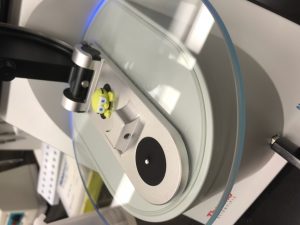Lab 14: Poster Design
Purpose: To agree on a design for the poster that will be presented at the Biology Symposium, create and complete a layout for the poster
Conclusion/Results:
It wasn’t terribly difficult to agree on a design because there were only a few that weren’t distracting to the reader and were appealing to the eye. We had to agree on which group member was doing what. It took a while to determine what actually needed to be included on the poster and in what format. We ended up putting a bulleted introduction, a flowchart showing our methods throughout the whole semester, methods and materials for the Chelex protocol, results (including the images of our gels), and a conclusion/discussion section. The next step will be to modify our poster design based on the feedback we receive.









